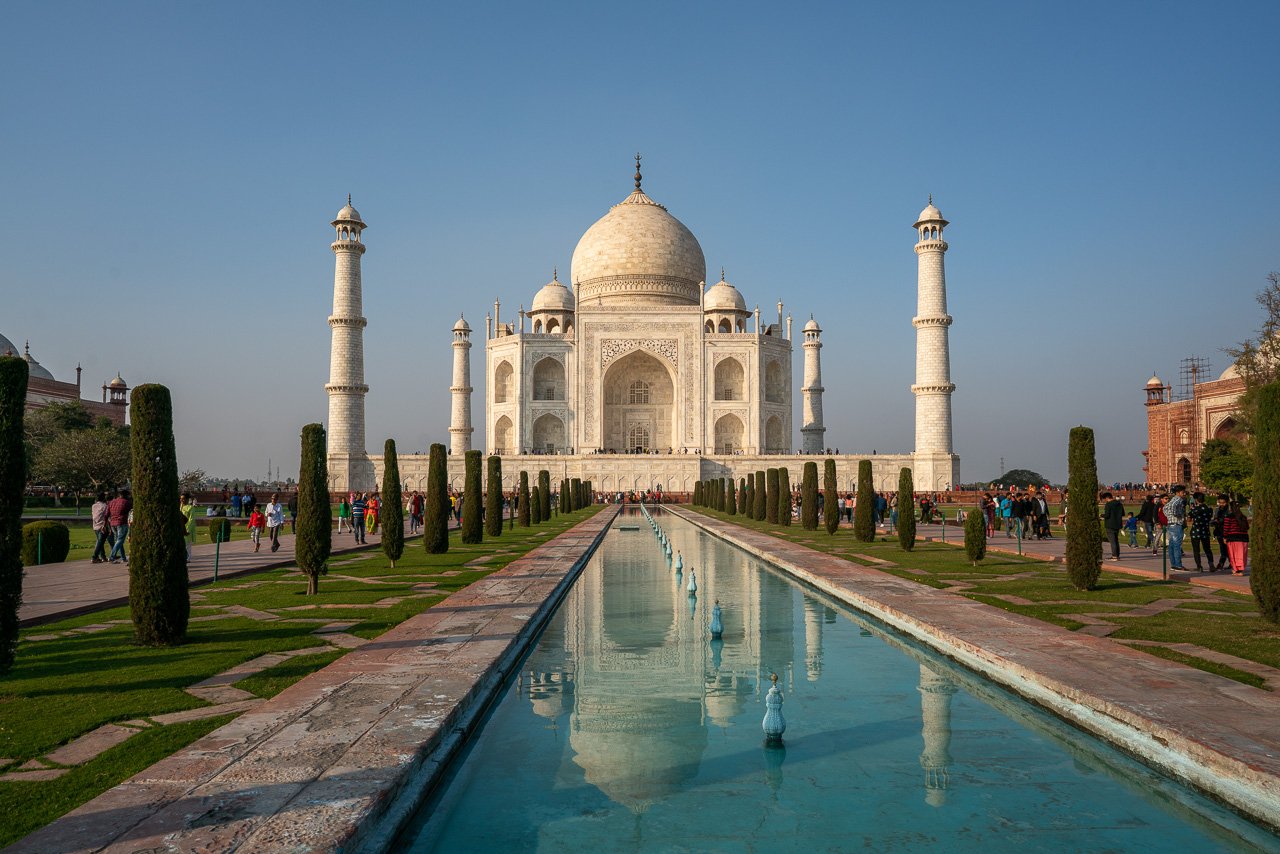
Taj Mahal
Taj Mahal
A tear on the cheek of time
When 1631 Mumtaz Mahal, the main wife and love of the Shah Jahan, died while she was giving birth to her 14th child, the Shah ordered to built a magnificent mausoleum to her honour.
The 58 m high and 56 m wide Taj Mahal was built on the southern bank of the Yamuna River on the outskirts of Agra, made out of fired bricks and completely covered with white marble.
The four minarets arranged around the main building are leanining slightly away from the building so that they do not fall on the main building in case of an earthquake. A walled garden of 18 hectares extends to the south. To the west, the Taj Mahal is flanked by a mosque and symmetrically to the east by a guest house.
Access to the complex is through a large gate building in the south.
In the architecture of the entire complex, Persian architecture merged with Indian elements to create an outstanding work of art, which is considered by many to be the most beautiful building in the world.
Legend says that Shah Jahan had planned to have an identical mausoleum built for himself on the other side of the Yamuna River and covered with black marble. There is much that speaks for this thesis, such as the asymmetrical garden around the Taj Mahal, which would have regained its symmetry through an identical construction on the north side of the river and thus corresponded to the Persian ideal.
But before he could carry out his plan, the Shah was overthrown by his own son and had to spend the rest of his life as a prisoner in the Red Fort of Agra. After his death, he was buried next to his wife in the Taj Mahal, destroying the perfect symmetry of the interior - further evidence that the Shah originally had other plans for his own burial place.
The Taj Mahal was added to the UNESCO World Heritage List in 1983.
Today, the Taj Mahal is not only a tourist magnet, but - as a symbol of eternal love - is also a favourite destination for newlyweds on their honeymoon.
The poet Rabindranath Tagore once described the Taj Mahal in one of his poems as "a tear on the cheek of time".
Comments
No Comments